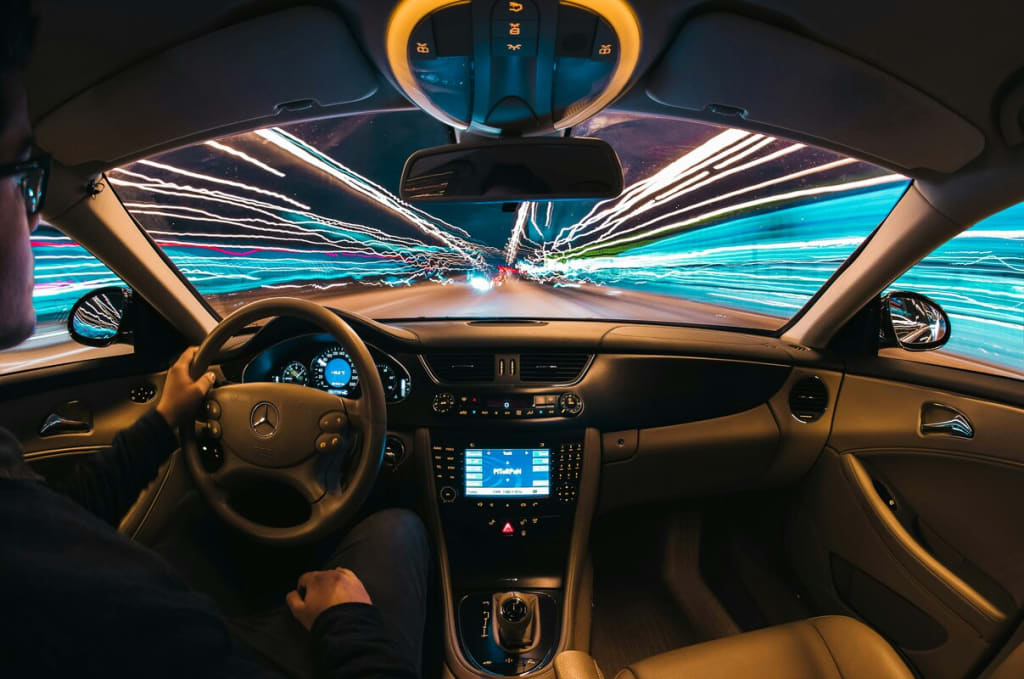The Impact of Autonomous Vehicles on Transportation Systems
How Self-Driving Cars are Revolutionizing Roads and Urban Mobility

Autonomous vehicles, frequently referred to as self-driving cars, are now not a distant dream however a fact shaping our destiny. These marvels of current generation are set to revolutionize the manner we think about transportation. But what precisely does this suggest for our modern structures, and what modifications are we able to assume? Buckle up as we dive into the sector of autonomous cars and discover their impact on transportation systems.
The Evolution of Autonomous Vehicles
From the early days of tinkering with rudimentary automated structures to state-of-the-art fantastically state-of-the-art self-riding vehicles, the adventure of self sustaining motors has been fascinating. Initially, the concept appeared extra science fiction than technology fact. Early innovations have been clunky and unreliable, however with the advent of superior technology, widespread strides have been made.
How Autonomous Vehicles Work
At the heart of self reliant vehicles lies a combination of modern technology. These consist of a plethora of sensors including LIDAR, radar, and cameras that offer a 360-diploma view of the vehicle's environment. These sensors feed statistics into superior software program systems that use device studying and synthetic intelligence to interpret the facts, make decisions, and control the vehicle.Benefits of Autonomous Vehicles
Safety Improvements
One of the most significant advantages of autonomous vehicles is the potential to dramatically improve road safety. Epic black car technology is leading the way in this revolution. Human error is a leading cause of accidents, and by removing the human element, autonomous vehicles can significantly reduce the number of traffic accidents. These vehicles are designed to adhere strictly to traffic laws, react faster than human drivers, and eliminate risks associated with drunk or distracted driving.
Reduction in Traffic Congestion
Autonomous motors can talk with each different and with site visitors control structures, optimizing traffic float and lowering congestion. They can adjust speeds and routes in actual-time, that could alleviate traffic jams and make certain a smoother riding enjoy for every body.
Environmental Benefits
By optimizing riding styles and decreasing idle times, independent cars can contribute to lower gasoline consumption and decreased emissions. Additionally, the shift in the direction of electric self reliant motors in addition enhances these environmental blessings, contributing to a greener and greater sustainable destiny.
Challenges Facing Autonomous Vehicles
Technical Challenges
Despite the advancements, there are still significant technical hurdles to overcome. These include perfecting the technology to handle all possible driving scenarios, ensuring reliable performance in adverse weather conditions, and achieving seamless integration with existing traffic systems.
Regulatory Hurdles
Regulation is a major roadblock for the widespread adoption of autonomous vehicles. Different countries and regions have varying laws and standards, creating a complex regulatory landscape that companies must navigate. Establishing a unified regulatory framework is essential for the global adoption of autonomous vehicles.
Public Perception and Trust
Gaining public trust is another challenge. While the technology is impressive, many people are still skeptical about its safety and reliability. High-profile accidents involving autonomous vehicles have also contributed to public hesitation. Building trust through transparent testing and communication is crucial for the acceptance of autonomous vehicles.
Impact on Urban Transportation
Changes in Public Transit
Autonomous vehicles are set to transform public transportation. Autonomous buses and shuttles can offer more efficient and flexible transit options, reducing wait times and operating costs. This could lead to a significant shift from private car ownership to shared autonomous transit systems.
Urban Planning and Infrastructure
City planning will need to adapt to accommodate autonomous vehicles. This includes redesigning roads, traffic signals, and parking structures. Autonomous vehicles could reduce the need for parking spaces, freeing up valuable urban land for other uses, such as parks and residential developments.
Parking and Space Utilization
With autonomous vehicles capable of dropping passengers off and parking themselves, the demand for urban parking spaces could decrease dramatically. This opens up opportunities for repurposing these spaces for community use, green spaces, or additional housing.
Impact on Rural Transportation
Accessibility Improvements
In rural areas, autonomous vehicles can improve accessibility by providing reliable transportation options where public transit is scarce. This can enhance the quality of life for residents by offering greater mobility and access to essential services.
Economic Implications
The introduction of autonomous vehicles in rural areas can stimulate local economies by creating new job opportunities in technology, maintenance, and infrastructure development. It can also attract businesses that benefit from improved logistics and transportation.
Infrastructure Challenges
However, rural areas face unique infrastructure challenges. Ensuring reliable connectivity and upgrading roads to support autonomous vehicles can be costly and time-consuming. Addressing these challenges is crucial for the successful deployment of autonomous vehicles in rural settings.
Economic Impacts
Job Market Shifts
The rise of autonomous vehicles will inevitably lead to shifts in the job market. While there may be a decline in demand for traditional driving jobs, new opportunities will emerge in technology, maintenance, and logistics. Workforce retraining and education will be essential to help workers transition to these new roles.
Cost Savings for Consumers
Autonomous vehicles can lead to significant cost savings for consumers. Reduced accident rates mean lower insurance premiums, and optimized driving patterns can result in fuel savings. Additionally, shared autonomous vehicles can lower the overall cost of transportation by reducing the need for individual car ownership.
Economic Opportunities in Tech and Manufacturing
The development and production of autonomous vehicles create substantial economic opportunities. This includes jobs in research and development, manufacturing, and the creation of new businesses focused on autonomous vehicle technology and services.
Environmental Impacts
Reduction in Emissions
Autonomous vehicles have the potential to significantly reduce greenhouse gas emissions. By optimizing driving patterns and reducing idling, these vehicles can lower fuel consumption. Furthermore, the shift towards electric autonomous vehicles will contribute to a cleaner and more sustainable environment.
Energy Consumption
Autonomous vehicles can improve energy efficiency by optimizing routes and driving patterns. This can lead to reduced overall energy consumption, benefiting both the environment and the economy.
Long-term Sustainability
The integration of autonomous vehicles with renewable energy sources and smart grid technologies can further enhance their sustainability. This long-term vision includes a transportation system that is not only efficient and convenient but also environmentally friendly.
Social Impacts
Changes in Lifestyle and Commuting
Autonomous vehicles will transform how we live and commute. With the ability to work, relax, or entertain during commutes, people will have more free time and flexibility. This could lead to changes in residential patterns, with people choosing to live further from their workplaces without the burden of long, stressful commutes.
Accessibility for Disabled and Elderly
One of the most significant social benefits of autonomous vehicles is improved accessibility for disabled and elderly individuals. These vehicles can provide greater independence and mobility, enhancing the quality of life for these populations.
Impact on Driving Culture
The widespread adoption of autonomous vehicles will also impact driving culture. Traditional notions of driving and car ownership may shift, with a greater emphasis on shared mobility and transportation as a service.
Legal and Ethical Considerations
Liability Issues
Determining liability in the event of an accident involving an autonomous vehicle is a complex issue. Questions about whether the manufacturer, software developer, or vehicle owner is responsible must be addressed to ensure a clear legal framework.
Ethical Dilemmas in Programming
Programming autonomous vehicles involves ethical decisions, such as how to prioritize the safety of passengers versus pedestrians in unavoidable accidents. These ethical considerations must be carefully addressed to ensure public trust and acceptance.
Privacy Concerns
Autonomous vehicles rely on vast amounts of data, raising concerns about privacy and data security. Ensuring that this data is protected and used responsibly is crucial for the success of autonomous vehicle technology.
Global Perspectives
Adoption in Different Regions
The adoption of autonomous vehicles varies significantly across different regions. Factors such as technological infrastructure, regulatory frameworks, and public acceptance play a role in how quickly and widely these vehicles are adopted.
Comparative Analysis of Regulations
Different countries have different regulatory approaches to autonomous vehicles. Understanding these differences and learning from best practices can help create a more cohesive global framework for autonomous vehicle adoption.
International Collaborations
International collaborations between governments, companies, and research institutions can accelerate the development and deployment of autonomous vehicles. Sharing knowledge and resources can help overcome common challenges and ensure the technology benefits everyone.
Future of Autonomous Vehicles
Predictions and Trends
The future of autonomous vehicles is full of exciting possibilities. Predictions include the widespread adoption of autonomous ride-sharing services, the integration of autonomous vehicles with smart cities, and the development of fully autonomous public transportation systems.
Potential for Integration with Other Technologies
Autonomous vehicles can integrate with other emerging technologies, such as the Internet of Things (IoT), 5G networks, and smart grids. This integration can create a seamless and highly efficient transportation system.
Long-term Vision for Transportation Systems
The long-term vision for autonomous vehicles includes a world where transportation is efficient, safe, and environmentally friendly. This vision encompasses not just cars but also buses, trucks, and even drones, creating a comprehensive and interconnected transportation ecosystem.
Conclusion
The impact of autonomous vehicles on transportation systems is profound and far-reaching. From improving safety and reducing traffic congestion to transforming urban and rural transportation, the benefits are substantial. However, challenges such as technical hurdles, regulatory issues, and public perception must be addressed.
About the Creator
Enjoyed the story? Support the Creator.
Subscribe for free to receive all their stories in your feed. You could also pledge your support or give them a one-off tip, letting them know you appreciate their work.





Comments
There are no comments for this story
Be the first to respond and start the conversation.